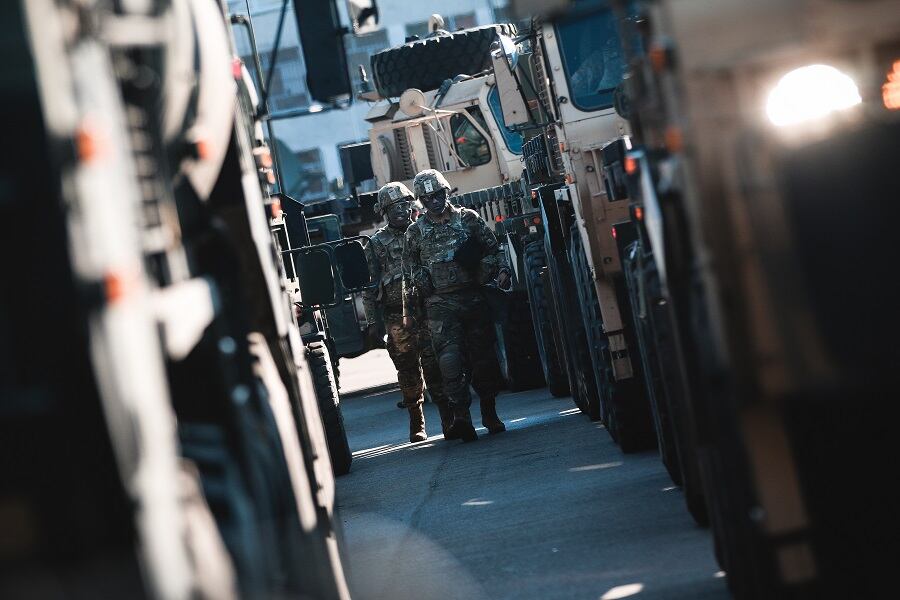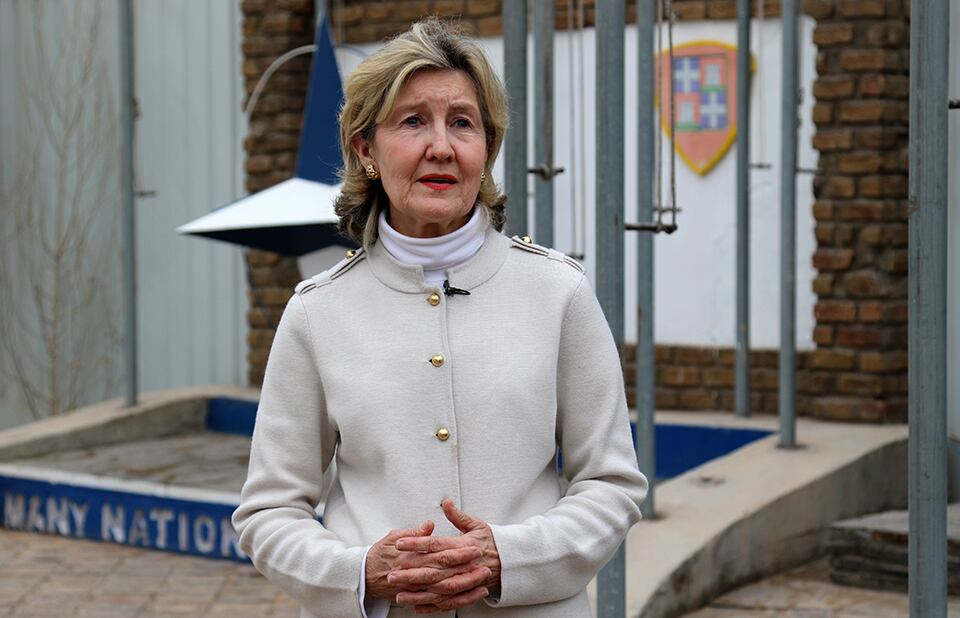WASHINGTON ― As the European Union works to establish its role in maintaining European security, the organization is searching for ways to complement NATO capabilities and missions.
One area where the European legislative body is uniquely capable of aiding NATO is military mobility. The nascent European Permanent Structured Cooperation initiative on security and defense has already launched a military mobility effort, which received praise from Thomas Goffus, deputy assistant secretary of defense for Europe and NATO.
“Success of the military mobility initiative, which is ably led by the Dutch, is a flagship initiative that could provide capable transportation modes and nodes, drastically streamlined and uniformed customs procedures, and common rules for all NATO allies and EU members as they apply for transporting things across the continent,” Goffus said, speaking at the EU Security and Washington Symposium on June 13. “Rapid movement is essential to a credible defense and credible deterrence.”
RELATED

NATO Secretary General Jens Stoltenberg, in speaking before the alliance’s Parliamentary Assembly on May 28, said NATO’s security “does not just depend on the forces we have deployed, but it also very much depends on our ability to move forces to reinforce quickly if needed.”
With its experience as a legislative body, the EU is well-positioned to help NATO remove bureaucratic barriers to transporting military equipment and organize infrastructure projects.
The permanent secretary for the Estonian Ministry of Defence, Jonatan Vseviov, noted that “the EU has a lot of experience when it comes to infrastructure, a lot of experience when it comes to regulations,” making it a perfect partner to tackle the challenges of military mobility.
“The military mobility example is very clear,” added Jorge Domecq, head of the European Defence Agency. “For military mobility to work you need a whole government approach to it, and that unfortunately you cannot do in NATO. You need to use EU to do it.”
RELATED

But military mobility is not just beneficial in wartime. Goffus stressed that increasing effective mobility across Europe may be key to preventing the escalation of future conflicts. Mobility gives “credibility to a reinforcement strategy for major combat forces. ... [T]wo things together, on the front end is having NATO command and control capability to move the chess pieces around the board, the second is having chess pieces that are ready to be moved,” he said.
However, the move to mobility will not be easy. Domecq explained that although “the EU can enable and bring to the table aspects that will facilitate and make military mobility happen easier and earlier” it will require “a big investment in effort logistics and funding-wise from member states. The brunt of the whole effort will be at the national level because this is a question of sovereignty.”
On June 7, NATO defense ministers announced they will be discussing a new NATO readiness initiative, dubbed Four Thirties, at the July NATO Summit in Brussels. The plan would enable NATO to respond to a European crisis by deploying 30 troop battalions, 30 squadrons of aircraft and 30 warships within 30 days.
Cyber readiness, NATO’s command structure and other key security concerns are set to be discussed by representatives from the 29 allied nations in Brussels during the July 11-12 biannual summit.
Aaron Mehta contributed to this report.
Daniel Cebul is an editorial fellow and general assignments writer for Defense News, C4ISRNET, Fifth Domain and Federal Times.







